
This rifle was made in the Colonial Williamsburg Gunshop in 1975 and based loosely on an antique North Carolina made rifle I had seen. The whereabouts of the old rifle is presently unknown. I would like to contact the present owner of the original about getting better photographs of it.
This rifle has a Siler lock and a Bob Paris .50 caliber barrel. The rest was made in the shop. The stock is sugar maple. The lock and barrel were rust blued.
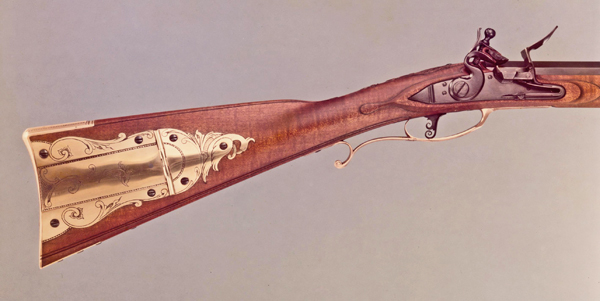
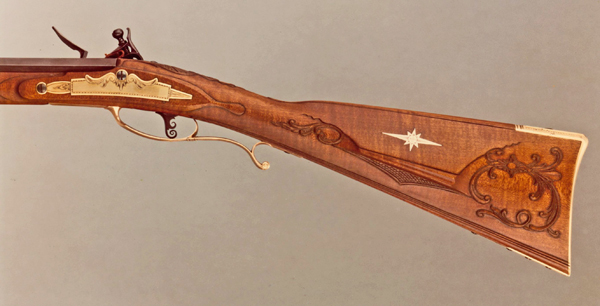
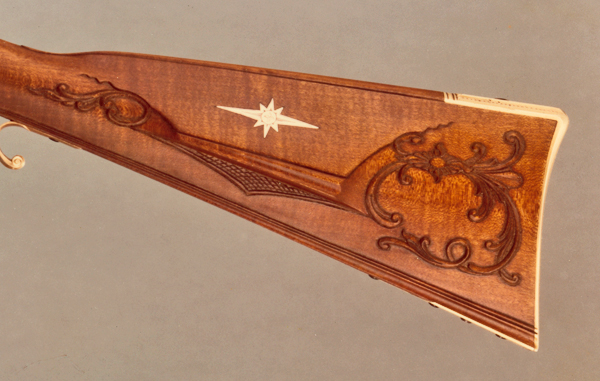
Colonial Williamsburg photos from 1975
The remaining pictures were taken in 2008.
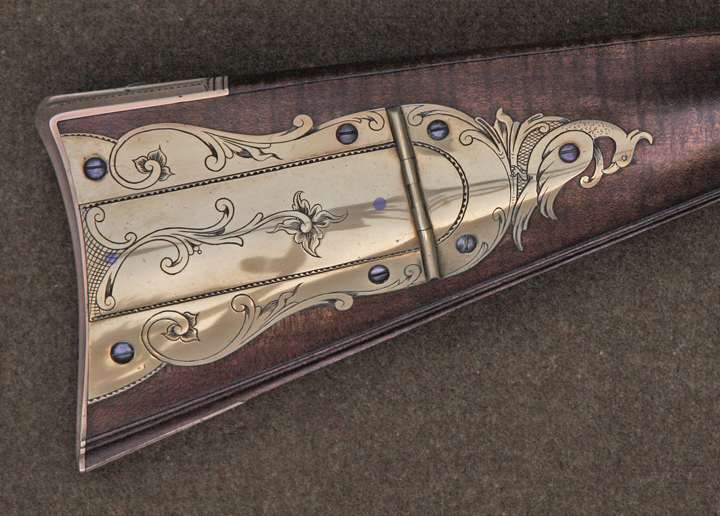
This photo was taken in dim light to reduce some of the glare on the
brass.
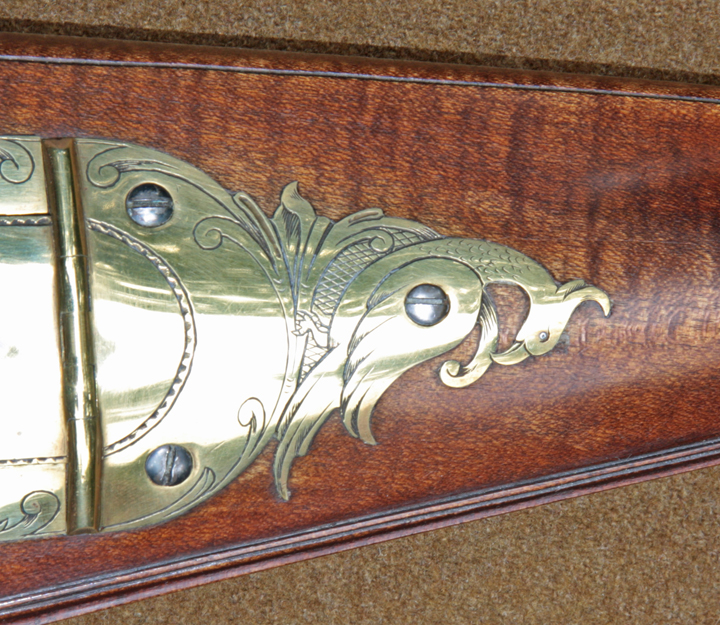
The lower screw has gotten cross threaded so the slot no longer lines up
with all the others.
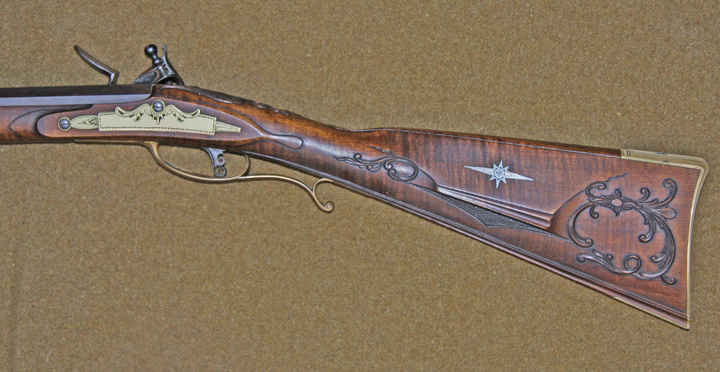
Despite the acid being neutralized, the stock has darkened considerably in 33
years.
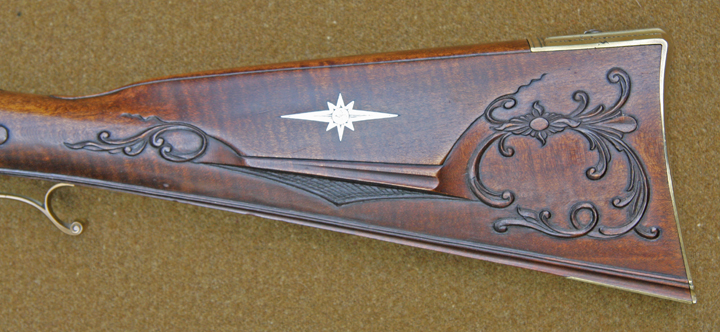
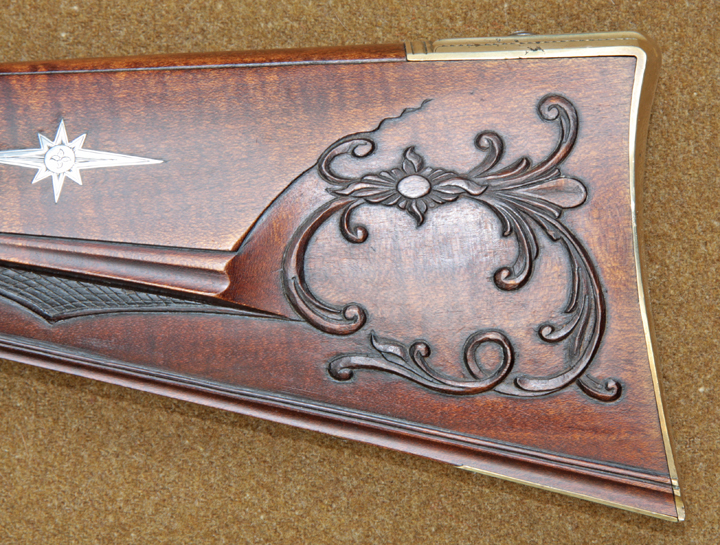
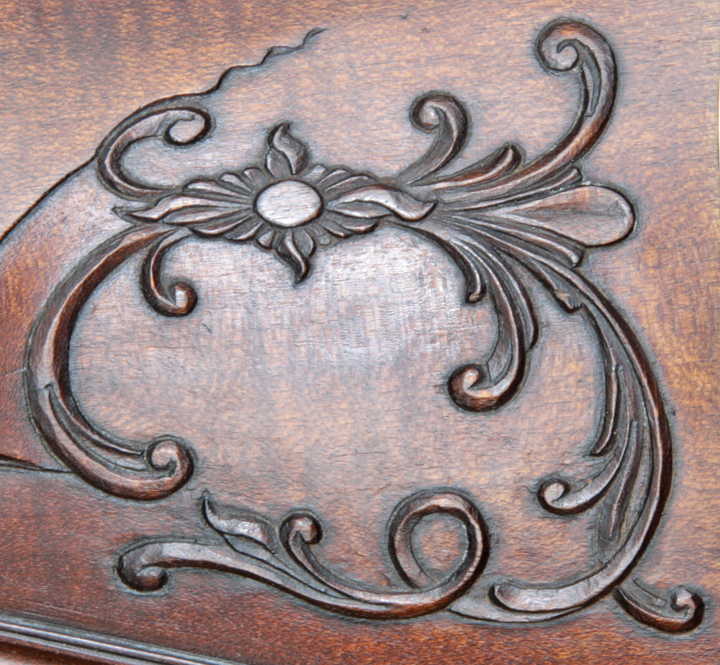
One of the challenges faced by modern rifle builders is creating carving
that is finished in a "workmanlike manner" but not overly finished.
Among the many issues behind this challenge is the fact that the the
standard was not a single standard. It varied over time, region and
individual maker. What was an acceptable in the Vogler's shop in 1800
was very different from the Christian's Spring shop in 1775.
Another complication arises from the customer's expectation. In 1975, when this rifle was carved, we were just a decade into trying to educate the shop's clients about the difference between period work and Arts and Crafts movement Colonial Revival work. Being at Colonial Williamsburg gave us both the opportunity and the responsibility to take the lead in this.
However, if you could examine all the shop production from 1965 to 1990 you would find that we had cycles where we disciplined ourselves to turn out our interpretation of period correct rifles but at other times we let our own egos get involved and produced rifles that were overdone --- perhaps, in part, just to prove we could do work equal to our peers of the time.
Note chisel cut and scraped finish on this rifle. If I remember correctly, I used only 3 or 4 chisels in doing this carving.
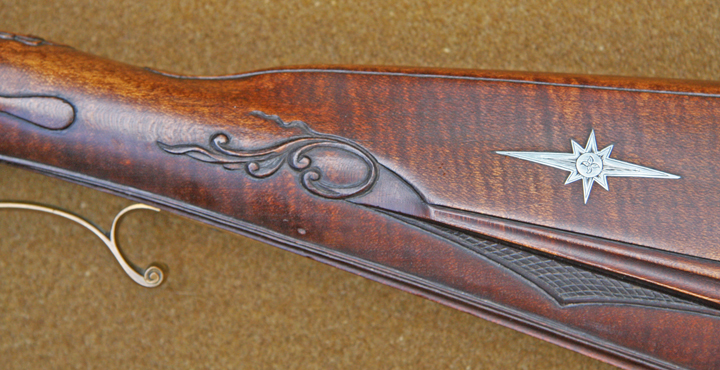

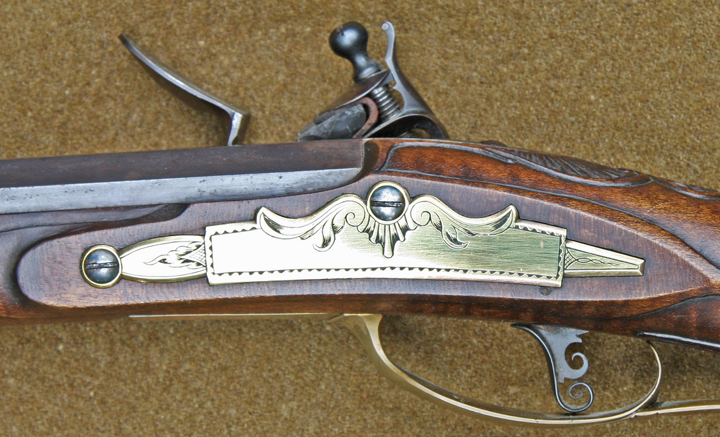
Fancy single triggers were another common shop detail in the 1970s. They
were cold forged from 1/16 inch sheet steel.
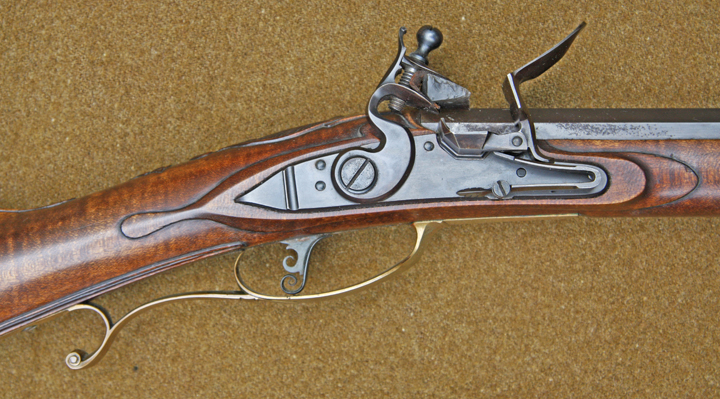
The rust blue on the lock and barrel has held up well but this rifle has
not been shot in the last 20 years.
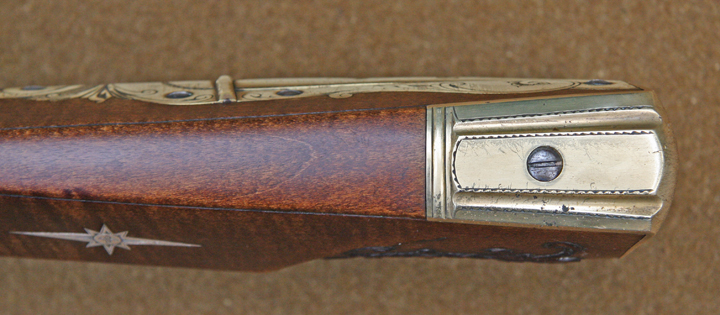
The butt piece casting, with the twin flutes, was one of several shop
patterns and not intended to be thought of as a North Carolina detail.
Note the sand flaws in the casting below the screw.
We did not discard a casting just because it had a few flaws. Neither
did period smiths.

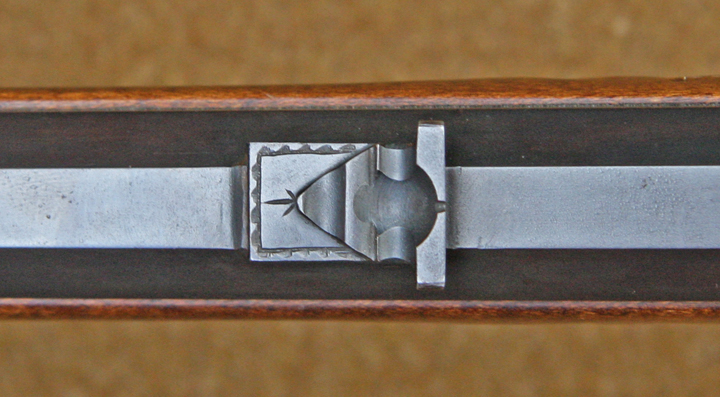
Another "school detail" of rifles from the CWF shop in this period was
the use of a bullet mold cherry to form the thin portion of the hind
sight blade.
(top)